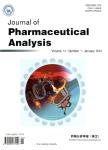Multiple responses optimization in the development of a headspace gas chromatography method for the determination of residual solvents in pharmaceuticals
Multiple responses optimization in the development of a headspace gas chromatography method for the determination of residual solvents in pharmaceuticals作者机构:Laboratorio de Control de Calidad de MedicamentosFacultad de Bioquimica y Ciencias BiologicasUniversidad Nacional del Litoral
出 版 物:《Journal of Pharmaceutical Analysis》 (药物分析学报(英文版))
年 卷 期:2015年第5卷第5期
页 面:296-306页
学科分类:0710[理学-生物学] 1007[医学-药学(可授医学、理学学位)] 100704[医学-药物分析学] 1002[医学-临床医学] 07[理学] 0817[工学-化学工程与技术] 070302[理学-分析化学] 0703[理学-化学] 10[医学] 0702[理学-物理学]
基 金:Universidad Nacional del Litoral (Projects CAI+D 2011 No.PI-50120110100025 LI) ANPCyT (Agencia Nacional de Promocin Científica y Tecnolgica,Project PICT 2011-0005) for financial support
主 题:Headspace gas chromatographyResidual solventsPharmaceuticalsSurface response methodologyDesirabiliW function
摘 要:An efficient generic static headspace gas chromatography (HSGC) method was developed, optimized and validated for the routine determination of several residual solvents (RS) in drug substance, using a strategy with two sets of calibration. Dimethylsulfoxide (DMSO) was selected as the sample diluent and internal standards were used to minimize signal variations due to the preparative step. A gas chroma- tograph from Agilent Model 6890 equipped with flame ionization detector (FID) and a DB-624 (30 m × 0.53 mm i.d., 3.00 μm film thickness) column was used. The inlet split ratio was 5:1. The influ- encing factors in the chromatographic separation of the analytes were determined through a fractional factorial experimental design. Significant variables: the initial temperature (IT), the final temperature (FT) of the oven and the carrier gas flow rate (F) were optimized using a central composite design. Response transformation and desirability function were applied to find out the optimal combination of the chromatographic variables to achieve an adequate resolution of the analytes and short analysis time. These conditions were 30 ℃ for IT, 158 ℃ for FT and 1.90 mL/min for F. The method was proven to be accurate, linear in a wide range and very sensitive for the analyzed solvents through a comprehensive validation according to the ICH guidelines.



